Newest Post
How to Write a Paragraph
Paragraph Length in a Piece of Writing
While it is true that a paragraph may be of any length, it is most common for an essay paragraph to be at least 3-5 sentences long and to be no longer than half a typed, double-spaced page. Journalism paragraphs (newspapers and magazines) tend to be 1-3 sentences long. Some paragraphs in books, especially technical treatises, might go on for several printed pages.No matter what length an individual paragraph, most good writing varies paragraph length within any one piece of writing. If there are a few short paragraphs, then a longer one usually comes along. If there are one or two long paragraphs, usually a short paragraph or two will intervene to give the reader a short break in concentration.
Use Paragraphs to Break Up Ideas
A paragraph is the container for only one idea. Often, a longer paragraph can - and should - be divided into smaller units. Usually a large, complex idea is made up of smaller ideas and can be explained in more paragraphs with those smaller ideas. The point, though, is to have one coherent paragraph - all of the ideas in each sentence of the paragraph must relate to a single main point. That point is most often made in a topic sentence.Topic Sentences in Paragraphs
A topic sentence gives the main idea of a paragraph. It usually occurs as the first or last sentence of the paragraph. Some paragraphs will not have a topic sentence, if the main point is obvious. Others might place the topic sentence slightly differently. Occasionally, as in this paragraph, the topic sentence might begin the paragraph but be restated in a different way at the end. That is to say, most writers put the topic sentence of a paragraph at the beginning or the end or both.Grammar in Paragraphs
Every sentence in a paragraph must be grammatically correct, in so much as that grammar aids in understanding the ideas that the writer would like to convey. The topic sentence, in particular, must be very well written and very clear to readers. Of course, WhiteSmoke's grammar checker can be employed here to pick up any errors. The WhiteSmoke free online grammar checker could even be used if you just need to check your writing very occasionally.Types of Paragraphs
Most writing has an introductory paragraph or an introduction of a few paragraphs, and a conclusion of a few paragraphs or concluding paragraph. The introduction and conclusion are, of course, supported by body paragraphs. The typical body paragraph develops, supports, or elaborates a given topic sentence. Most paragraph structures longer than 1-2 sentences have common elements.For example, expository paragraphs have three important elements common to most paragraphs: flow, or unity (a clear connection to the rest of the essay and placed in a sensible way among the other paragraphs; development (detailed, specific support or elaboration of the main idea); and coherence (each sentence clearly relates to the previous and next sentence in an understandable and sensible manner). Persuasive paragraphs focus on developing a strong argument that would convince someone who disagrees with the writer's position.
Narrative paragraphs have similar features of flow (or unity) and coherence. However, the development might be more related to the action or events narrated in the paragraph than to supporting an argument. Coherence in a narrative paragraph usually comes from the chronological order of the "story" or narrative. Similarly, a descriptive paragraph might find its development through giving a series of sensory details or of abstract ideas that describe an object (or concept or theory), rather than through support. These two types of paragraph - narrative and descriptive - differ only slightly in these respects from expository paragraphs, but the differences are still important.
With some attention to flow, development, and coherence in your paragraphs, you will soon be writing powerfully.
Career Planning Tips
Building a Career
Today, and more than ever, most people are responsible for building their own careers.Whether you are just starting, or you have several years of experience, these paragraphs might help you advance your career.
The 9 most important career planning tips is listed below:
1. Never Stop Learning
Life-long learning is your keyword.The world is constantly changing, and everybody is looking for new ways of doing business.
If you have decided that your current skills are good enough, you have also decided that your current job is good enough.
But if you want a career in the future, you should add regular updates to your skills and knowledge.
2. Ask, Listen And Learn
A good listener can learn a lot.Listen to your co-workers, your boss, and your superiors. You can learn a lot from their experience.
Ask about issues that interest you, and listen to what they say. Let them tell you about how things work, and what you could have done better.
Most people will love to be your free tutor.
3. Fulfill Your Current Job
Your current job might be best place to start your career.It is often very little that separates successful people from the average. But nothing comes free.
If you do your job well and fulfill your responsibilities, this is often the best way to start a new career.
Talk to your supervisor about things you can do. Suggest improvements. Offer your help when help is needed. In return ask for help to build a better career. It is often possible - right inside your own organization - especially if you have proved to be a valued employee.
4. Build Your Network
Your next career step might arise from your contact network.Did you know that more than 50% of all jobs are obtained from contact networks?
If you have a good contact network, it is also a good place to discover future careers, to explore new trends, and to learn about new opportunities.
Spend some time building new contacts, and don't forget to maintain the ones you already have.
One of the best ways to get serious information from your network is to regularly ask your contacts how they are, what they do, and what is new about their careers.
5. Identify Your Current Job
Your current job should be identified, not assumed.Make sure you don't work with tasks you assume are important. This is waste of time and talent.
When you start in a new job, talk to your superior about your priorities. If you're not sure about what is most important, then ask him. And ask him again. Often you will be surprised about the differences between what you assume, and what is really important.
6. Identify Your Next Job
Your dream job must be identified.Before you start planning your future career, be sure you have identified your dream job.
In your dream job, you will be doing all the things you enjoy, and none of the things you don't enjoy. What kind of job would that be?
Do you like or dislike having responsibility for other employees. Do you like to work with technology or with people? Do you want to run your own business? Do you want to be an artist, a designer or a skilled engineer? A manager?
Before building your future career your goal must be identified.
7. Prepare Yourself
Your dream might show up tomorrow. Be prepared.Don't wait a second. Update your CV now, and continue to update it regularly.
Tomorrow your dream job may show up right before your nose. Prepare for it with a professional CV and be ready to describe yourself as a valuable object to anyone that will try to recruit you.
If you don't know how to write a CV, or how to describe yourself, start learning it now.
8. Pick The Right Tools
Pick the tools you can handle.You can build your future career using a lot of different tools. Studying at W3Schools is easy. Taking a full master degree is more complicated.
You can add a lot to your career by studying books and tutorials (like the one you find at W3Schools). Doing short time courses with certification tests might add valuable weight to your CV. And don't forget: Your current job is often the most valuable source of building new skills.
Don't pick a tool that is too heavy for you to handle!
9. Realize Your Dreams
Put your dreams into action.Don't let a busy job kill your dreams. If you have higher goals, put them into action now.
If you have plans about taking more education, getting a better job, starting your own company or something else, you should not use your daily job as a "waiting station". Your daily job will get more and more busy, you will be caught up in the rat race, and you will burn up your energy.
If you have this energy, you should use it now, to realize your dreams.
Unit 4 - Lesson 17 - Telling the Time in English # 2
Remember
Revise these time expressions - Telling the time # 1
Learn
Requires Real Player Basic
Telling the time to the half hour or quarter hour
There are 15 minutes in quarter of an hour.There are 30 minutes in half an hour.
There are 45 minutes in three quarters of an hour.
When it's past the hour (up to 30 minutes past) we say "past".
When it's before the hour (after 30 minutes past) we say "to".
30 minutes is half an hour, we say "half past" or "thirty".
15 minutes is quarter of an hour. At 15 minutes past the hour we say "quarter past" or "fifteen". At fifteen minutes to the hour we say "quarter to" or "forty-five".

 |
Twelve o'clock |  |
Twelve fifteen or Quarter past twelve |
 |
Twelve thirty or Half past twelve |
 |
Twelve forty-five or Quarter to one |
Naturally speaking
Exactly or about
| Exactly | About | ||
|---|---|---|---|
|
|
 |
or
|
|
 |
or
|
|
 |
or
|
Writing the time
| AM | 00:01 - 11:59 |
| write a.m. - stands for Ante Meridiem (the time between midnight and noon) | 00:01 to 11:59 |
| write noon or midday | 12:00 |
| write p.m. - stands for Post Meridian (after noon) | 12:01 - 23:59 |
| write midnight | 24:00 |
Speaking about the time generally
If you say "Good morning" at 1 am, people will think you are strange. Different rules apply, which are more to do with how light it is. See also "Greetings".| Daytime - the time between sunrise and sunset | Starts at sunrise / dawn |
| morning - the time between sunrise and noon | sunrise - 11:59 |
| afternoon - the time between noon and sunset | 12:01 - sunset |
| Nighttime - the time between sunset and sunrise | Starts at sunset / dusk |
| evening - the time between sunset and night (full darkness) | sunset - darkness |
| night - the time after evening and before sunrise | dark - sunrise |
There are 24 hours in a day, but only the military, police and computer programmers use the 24-hour clock. When writing or speaking generally we tend to use the 12-hour clock.a.m. p.m.
The 24 hours of the day are divided into two periods called a.m. (Latin "ante meridiem" | English: "before mid day") and p.m. (Latin "post meridiem" | English: "after mid day").
The way people write the time varies. I prefer a.m. and p.m.
Choose from the following styles or use what your English teacher tells you to and stick to it:-
am pm
AM PM
A.M. P.M.
Some people use a dot as the separator: 2.30 pm.
Some people use a colon as the separator: 2:30 pm. The colon is usually used with the 24-hour clock: 14:30.
| Adjectives Describing People and Personal Qualities Vocabulary Word List | More Adjectives More Word Banks |
|
abnormal absent-minded above average adventurous affectionate agile agreeable alert amazing ambitious amiable amusing analytical angelic apathetic apprehensive ardent artificial artistic assertive attentive average awesome awful beautiful below average beneficent blue blunt boisterous brave bright brilliant buff candid cantankerous capable careful careless caustic cautious charming childish childlike cheerful chic churlish circumspect civil clean clever clumsy coherent cold competent composed conceited condescending confident confused conscientious considerate content cool cool-headed cooperative cordial courageous cowardly crabby crafty cranky crass critical cruel curious cynical |
decisive deep deferential deft delicate demonic dependent delightful demure depressed devoted dextrous diligent direct dirty disagreeable discerning discreet disruptive distant distraught distrustful dowdy dramatic dreary drowsy drugged drunk dull dutiful earnest easy-going efficient egotistical elfin emotional energetic enterprising enthusiastic evasive even-tempered exacting excellent excitable experienced fastidious ferocious fervent fiery flabby flaky flashy frank friendly funny fussy gentle gloomy glutinous good grave great groggy grouchy guarded hearty helpful hesitant hot-headed hypercritical hysterical |
idle illogical imaginative immature immodest impatient imperturbable impetuous impractical impressionable impressive impulsive inactive incisive incompetent inconsiderate inconsistent independent indiscreet indolent indefatigable industrious inexperienced insensitive inspiring intelligent interesting intolerant inventive irascible irritable irritating jovial joyous judgmental kind lazy lean leery lethargic level-headed listless lithe lively local logical long-winded lovable love-lorn lovely mature mean meddlesome mercurial methodical meticulous mild miserable modest moronic morose motivated musical |
nasty natural naughty negative nervous noisy normal nosy numb obnoxious old-fashioned one-sided orderly ostentatious outgoing outspoken passive paternal paternalistic patient peaceful peevish pensive persevering persnickety petulant picky plain plain-speaking playful pleasant plucky polite popular positive powerful practical prejudiced pretty proficient proud provocative prudent punctual |
querulous quick quick-tempered quiet reassuring reclusive reliable reluctant resentful reserved resigned resourceful respected respectful responsible restless revered ridiculous sassy saucy sedate self-assured selfish sensible sensitive sentimental serene serious sharp short-tempered shrewd shy silly sincere sleepy slight sloppy slothful slovenly slow smart snazzy sneering snobby somber sober sophisticated soulful soulless sour spirited spiteful stable staid steady stern stoic striking strong stupid sturdy subtle sullen sulky supercilious superficial surly suspicious sweet |
tactless talented testy thinking thoughtful thoughtless timid tired tolerant touchy tranquil unaffected unbalanced uncertain uncooperative undependable unemotional unfriendly unguarded unhelpful unimaginative unmotivated unpleasant unpopular unreliable unsophisticated unstable unsure unthinking unwilling versatile vigilant warmhearted wary watchful weak well-behaved well-developed well-intentioned well-respected well-rounded willing wonderful vulnerable |
More Word Lists
Words for Clothing
Find words and phrases to describe clothing and apparel. If you write about fashion or just love clothes, this is the place for you.- 60s-inspired
- 70s-inspired
- 80s-inspired
- active
- adjustable
- adorable
- anatomic
- anatomically designed
- antimicrobial
- asymmetrical
- banded
- beaded
- beautiful
- big & tall
- bloused
- bold
- boot cut
- boxy
- boys'
- breathable
- button-down
- buttoned
- casual
- chic
- classic
- collared
- colored
- colorful
- comfortable
- comfy
- constructed of
- contemporary
- control-top
- cool
- couture
- crisp
- cross-stitched
- cushioned
- custom
- cut-out
- cute
- cutting-edge
- dainty
- dapper
- decorative
- dependable
- designer
- detailed
- discounted
- distressed
- dramatic
- drapey
- durable
- easy-to-maintain
- eco-friendly
- edgy
- efficient
- elegant
- embellished
- embroidered
- engineered
- environmentally-friendly
- ergonomic
- essential
- everyday
- exceptional
- exciting
- exotic
- extra large
- fabric-lined
- fancy
- fashionable
- faux
- favorite
- feminine
- figure-friendly
- finely detailed
- flattering
- flexible
- flirty
- floaty
- forgiving
- form-fitting
- full-priced
- fully lined
- funky
- geometric
- girls'
- glamorous
- glitzy
- graceful
- half-priced
- hand-sewn
- hand-washed
- handsome
- high-performance
- high-waisted
- hot
- imported
- individualist
- innovative
- intricate
- itch-free
- junior's
- kids'
- knit
- lacy
- lapel
- large
- latest
- layered
- lightweight
- line-free
- lined
- long-lasting
- loose
- machine washable
- masculine
- medium
- men's
- metallic
- mini
- minimalist
- mixed-media
- modern
- moisture-wicking
- must-have
- non-iron
- odor-absorbing
- odor-resistant
- old-fashioned
- opaque
- organic
- oversized
- patchwork
- patterned
- petite
- pieced
- pleated
- plus size
- plush
- polished
- practical
- premium
- preppy
- pretty
- printed
- professional
- protective
- pull-on
- quilted
- racy
- refined
- reflective
- reinforced
- relaxed
- reliable
- remodeled
- retro
- retro print
- reworked
- ribbed
- ripstop
- rocker-style
- romantic
- ruched
- rugged
- sale-priced
- sassy
- savvy
- scooped-neck
- see-through
- sensational
- sexy
- shaping
- sheer
- short sleeve
- silky
- silky soft
- simple
- skinny
- skinny-fit
- sleek
- slimmer
- slimming
- slip-on
- slouched
- slouchy
- small
- soft
- solid
- sophisticated
- sporty
- standard
- standard-fit
- state-of-the-art
- stitched
- straight
- strapless
- stretch
- stretchy
- structural
- stunning
- stylish
- superior
- supersoft
- supple
- supportive
- symmetrical
- synthetic
- tailored
- textured
- tight
- timeless
- top-of-the-line
- translucent
- trendsetting
- trendy
- true-to-size
- unique
- versatile
- vintage
- voluminous
- waist-slimming
- water-resistant
- waterproof
- wear-anywhere
- whimsical
- women's
- yarn-dyed
- zippered
heloww...learning reading yukss, open this link http://downloads.ziddu.com/download/24218426/reading-power-ok.pdf.html
Tag :// LINK DOWNLOAD
Vectors and Direction
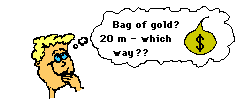 Examples of vector quantities that have been previously discussed include displacement, velocity, acceleration, and force.
Each of these quantities are unique in that a full description of the
quantity demands that both a magnitude and a direction are listed. For
example, suppose your teacher tells you "A bag of gold is located
outside the classroom. To find it, displace yourself 20 meters." This
statement may provide yourself enough information to pique your
interest; yet, there is not enough information included in the statement
to find the bag of gold. The displacement required to find the bag of
gold has not been fully described. On the other hand, suppose your
teacher tells you "A bag of gold is located outside the classroom. To
find it, displace yourself from the center of the classroom door 20
meters in a direction 30 degrees to the west of north." This statement
now provides a complete description of the displacement vector - it
lists both magnitude (20 meters) and direction (30 degrees to the west
of north) relative to a reference or starting position (the center of
the classroom door). Vector quantities are not fully described unless
both magnitude and direction are listed.
Examples of vector quantities that have been previously discussed include displacement, velocity, acceleration, and force.
Each of these quantities are unique in that a full description of the
quantity demands that both a magnitude and a direction are listed. For
example, suppose your teacher tells you "A bag of gold is located
outside the classroom. To find it, displace yourself 20 meters." This
statement may provide yourself enough information to pique your
interest; yet, there is not enough information included in the statement
to find the bag of gold. The displacement required to find the bag of
gold has not been fully described. On the other hand, suppose your
teacher tells you "A bag of gold is located outside the classroom. To
find it, displace yourself from the center of the classroom door 20
meters in a direction 30 degrees to the west of north." This statement
now provides a complete description of the displacement vector - it
lists both magnitude (20 meters) and direction (30 degrees to the west
of north) relative to a reference or starting position (the center of
the classroom door). Vector quantities are not fully described unless
both magnitude and direction are listed.
 Representing Vectors
Representing Vectors
Vector quantities are often represented by scaled vector diagrams.
Vector diagrams depict a vector by use of an arrow drawn to scale in a
specific direction. Vector diagrams were introduced and used in earlier
units to depict the forces acting upon an object. Such diagrams are
commonly called as free-body diagrams.
An example of a scaled vector diagram is shown in the diagram at the
right. The vector diagram depicts a displacement vector. Observe that
there are several characteristics of this diagram that make it an
appropriately drawn vector diagram.- a scale is clearly listed
- a vector arrow (with arrowhead) is drawn in a specified direction. The vector arrow has a head and a tail.
- the magnitude and direction of the vector is clearly labeled. In this case, the diagram shows the magnitude is 20 m and the direction is (30 degrees West of North).
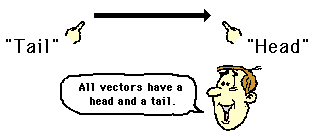
Conventions for Describing Directions of Vectors
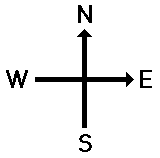 Vectors can be directed due East, due West, due South, and due North. But some vectors are directed northeast (at a 45 degree angle); and some vectors are even directed northeast,
yet more north than east. Thus, there is a clear need for some form of a
convention for identifying the direction of a vector that is not
due East, due West, due South, or due North. There are a variety of
conventions for describing the direction of any vector. The two
conventions that will be discussed and used in this unit are described
below:
Vectors can be directed due East, due West, due South, and due North. But some vectors are directed northeast (at a 45 degree angle); and some vectors are even directed northeast,
yet more north than east. Thus, there is a clear need for some form of a
convention for identifying the direction of a vector that is not
due East, due West, due South, or due North. There are a variety of
conventions for describing the direction of any vector. The two
conventions that will be discussed and used in this unit are described
below:- The direction of a vector is often expressed as an angle of rotation of the vector about its "tail" from east, west, north, or south. For example, a vector can be said to have a direction of 40 degrees North of West (meaning a vector pointing West has been rotated 40 degrees towards the northerly direction) of 65 degrees East of South (meaning a vector pointing South has been rotated 65 degrees towards the easterly direction).
-
The direction of a vector is often expressed as a counterclockwise angle of rotation of the vector about its "tail"
from due East. Using this convention, a vector with a direction of 30
degrees is a vector that has been rotated 30 degrees in a
counterclockwise direction relative to due east. A vector with a
direction of 160 degrees is a vector that has been rotated 160 degrees
in a counterclockwise direction relative to due east. A vector with a
direction of 270 degrees is a vector that has been rotated 270 degrees
in a counterclockwise direction relative to due east. This is one of the
most common conventions for the direction of a vector and will be
utilized throughout this unit.
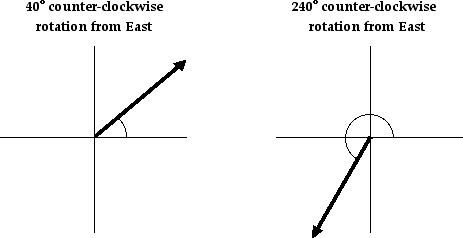
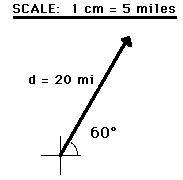 Representing the Magnitude of a Vector
Representing the Magnitude of a Vector
The magnitude of a vector in a scaled vector diagram is depicted by the
length of the arrow. The arrow is drawn a precise length in accordance
with a chosen scale. For example, the diagram at the right shows a
vector with a magnitude of 20 miles. Since the scale used for
constructing the diagram is 1 cm = 5 miles, the vector arrow is drawn with a length of 4 cm. That is, 4 cm x (5 miles/1 cm) = 20 miles.Using the same scale (1 cm = 5 miles), a displacement vector that is 15 miles will be represented by a vector arrow that is 3 cm in length. Similarly, a 25-mile displacement vector is represented by a 5-cm long vector arrow. And finally, an 18-mile displacement vector is represented by a 3.6-cm long arrow. See the examples shown below.
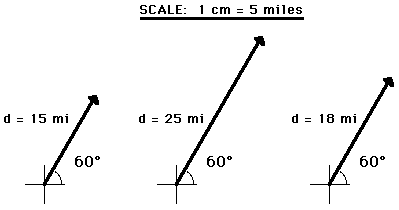
In conclusion, vectors can be represented by use of a scaled vector diagram. On such a diagram, a vector arrow is drawn to represent the vector. The arrow has an obvious tail and arrowhead. The magnitude of a vector is represented by the length of the arrow. A scale is indicated (such as, 1 cm = 5 miles) and the arrow is drawn the proper length according to the chosen scale. The arrow points in the precise direction. Directions are described by the use of some convention. The most common convention is that the direction of a vector is the counterclockwise angle of rotation which that vector makes with respect to due East.
In the remainder of this lesson, in the entire unit, and in future units, scaled vector diagrams and the above convention for the direction of a vector will be frequently used to describe motion and solve problems concerning motion. For this reason, it is critical that you have a comfortable understanding of the means of representing and describing vector quantities. Some practice problems are available on site at the following web page:
Visit the Vector Direction Practice Page




